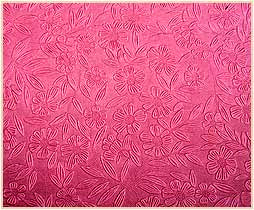FUTURE OF PAPER
If you thought the paper industry was going to
disappear, think again. Graphic papers are being squeezed, but the industry
overall has major changes in store and exciting prospects for new growth.
The year 2015 saw worldwide demand for graphic paper
decline for the first time ever, and the fall in demand for these products in
Europe and North America over the past five years has been more pronounced than
even the most pessimistic forecasts.
But the paper and forest-products industry as a
whole is growing, albeit at a slower pace than before, as other products are
filling the gap left by the shrinking graphic-paper
We may think we’re using less paper than in the
past. After all, we’re consuming media online, we think before we print, we opt
for digital bills and bank statements.
We might be using less paper in offices and buying
fewer newspapers because we’re now reading them online. But you’re ordering
more online. The stuff you buy on the internet has to be transported home, and
it’s sent in packaging made out of wood fibers. So, that’s one of the key
reasons the pulp and paper is a growing industry.
Environmental impact
Nowadays, 95% of the raw material used in the paper
industry comes from plantations. Millions and millions of trees would not exist
if not for the pulp and paper industry, because no one would be planting
millions of trees just for fun. Without the paper industry, the
environment would look much worse than it is today.
WEB vs PAPER
At first glance, that may seem to be a little ironic - after all, aren't advances in online technology and electronic media systematically reducing our need for paper?
Well, no, in fact. Paper consumption has increased consistently as the IT revolution has gathered pace. In today's information age paper continues to be the main tool for spreading information, culture and knowledge.
Far from being endangered by the arrival of the new information technologies, paper has become an indispensable complement to them and a symbiotic relationship has developed.
This underlines the fact that
although paper and IT products do share certain traits, they are in reality two
distinct entities, like apples and oranges, and any attempts to compare them is
a rather futile exercise.
A real irony in the paper/online relationship is the message which ruefully ends many of our email communications - the one which asks us to "please consider the environmental consequences when printing this email".
Although the intention is laudable, such messages actually make us less environmentally aware. They make the recipient feel guilty about using paper, which is a biodegradable, recyclable and amazing natural resource, whilst making the sender feel environmentally responsible by implicitly suggesting that it is harmless to send information in the virtual world.
Rather than target one media
over another - paper versus online - we need to target waste regardless of the
source. An unnecessary email or google search is as real a problem from an
environmental perspective, as the much maligned hard copy email, which can at
least be recycled.
The information age is here to
stay and it is bringing about a high speed and interconnected world. It also
needs to speed up its recognition of its growing detrimental impact on the
environment. A shared objective of both the paper and IT industries is to seek
to continually reduce environmental impacts, although, only paper can be an
active part of the solution.




.jpg)






